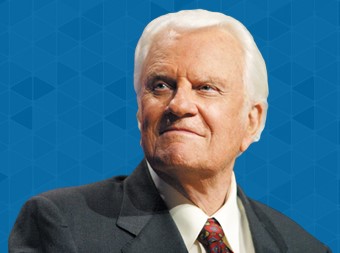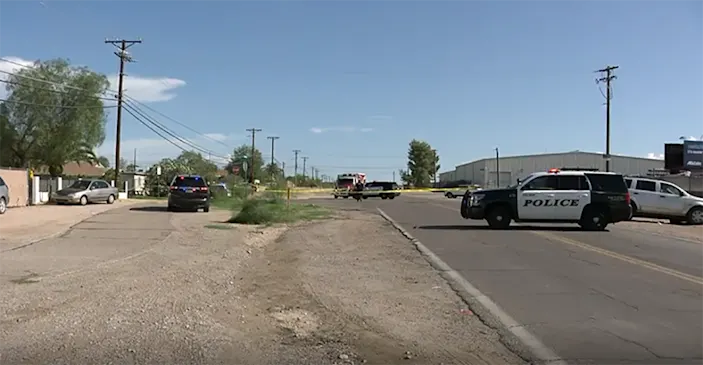80 years after Edward R. Murrow revealed the horrors of Buchenwald, the camp still has a vital story to tell
Posted by Temmy
Fri, April 11, 2025 3:25pm

People visit the Buchenwald concentration camp as Germany marks 80 years since its liberation, near Weimar, Germany, April 6, 2025. Karina Hessland / REUTERS
On April 12, 1945, CBS News correspondent Edward R. Murrow walked through the gates of the Nazis' Buchenwald concentration camp in Germany. He was unprepared for the horrors that waited inside the camp, just a day after it was liberated by U.S. forces.
It took the veteran war correspondent three days to find the words to describe what he had seen and experienced.
"I pray you to believe what I have said about Buchenwald," Murrow concluded in his report on April 15, which would become one of the most famous broadcasts of the 20th century. "I reported what I saw and heard, but only part of it. For most of it, I have no words."
Murrow's report 80 years ago exposed the atrocities of the Nazi concentration camp to listeners, shocking the public conscience in a broadcast heard by millions in the U.S. and around the world.
Six million Jewish people died in the Holocaust, and Murrow's eyewitness reporting on CBS Radio News provided a heartbreaking account of Buchenwald, one of the largest in a network of hundreds of Nazi concentration camps throughout Europe.
Photojournalists including Lee Miller and Margaret Bourke-White arrived at the camp soon after Murrow, capturing images of what the CBS News journalist was describing to listeners around the world. Visits by a U.S. congressional delegation and members of the British Parliament followed.
Three generations later, the work of those journalists remains critical to preserving the truth and combatting Holocaust denialism, according to Holger Obbarius, education director at the Buchenwald Memorial.
"In the process of dealing with this past, these images, films, and reports (became) very important," Obbarius said. "The contribution of very many people to this documentation is of a value that cannot be underestimated."
Without that body of reporting on the atrocities at Buchenwald, Obbarius said, "there would be much more room for denial and ignorance than we are dealing with now."
A life-changing visit for a legendary journalist
By 1945, his powerful on-the-ground reporting had made Murrow a household name. From the rooftops of London during the Blitz, and even from inside a British bomber as it carried out raids in the skies over Berlin, Murrow delivered detailed, unflinching accounts in his signature calm, dignified tone.
But nothing seemed to haunt Murrow like his visit to Buchenwald.
The infamous Auschwitz-Birkenau concentration camp in neighboring Poland had been liberated a few months earlier by the Soviet army, but no American journalist had been inside one of the Nazi camps until the CBS News correspondent reached Buchenwald.
From 1937 until its liberation in 1945, the camp imprisoned more than 250,000 people, and at least 56,000 died there.
Thousands of freed prisoners remained inside the camp in the days following its liberation. Hundreds more succumbed to their long mistreatment by the Nazis even after U.S. forces took control of the sprawling compound.
"We went to the hospital — it was full. The doctor told me that 200 had died the day before," Murrow reported. "I asked the cause of death. He shrugged and said, 'Tuberculosis, starvation, fatigue, and there are many who have no desire to live. It is very difficult.'"
Murrow went to see the crematorium, where thousands of prisoners' remains were incinerated, and to the guards' watchtower, taking in the vastness of one of Germany's largest concentration camps with many survivors still there, clinging to life.
"As we walked out into the courtyard, a man fell dead," Murrow recounted. "Two others, they must have been over 60, were crawling toward the latrine. I saw it, but will not describe it."
But even amid the horrors of Buchenwald, Murrow found hope in the faces of some survivors.
"Men and boys reached out to touch me," he reported. "They were in rags and the remnants of uniforms. Death already had marked many of them, but they were smiling with their eyes."
80 years later, Buchenwald has a new mission
Sitting on a hill about five miles from the town of Weimar, Buchenwald looks very different today. The prisoners' barracks are gone, marked by rows of granite stones where the buildings once stood. Today, roll call square — where Nazi guards would count and terrorize prisoners every morning and evening — is just a barren space that blends into the expansive camp.
The original barbed wire fences still surround the site, but Buchenwald is now also bordered by trees.
The crematorium building still stands. Some of the former disinfection buildings now house an art museum. Visitors to the memorial site walk through the camp's original gate, with the clock on its tower set permanently to mark 3:15, the moment of its liberation on the afternoon of April 11, 1945.
Every year, more than half a million visitors from Europe and around the world come to see Buchenwald.
On a recent Wednesday, teenagers who had traveled hours from western Germany found themselves trying to grasp the gruesome reality of Buchenwald's history. Many were about the same age as some of the Nazi guards who once patrolled the camp.
Teachers Diana Wellmann and Anna Laura Timmer brought their students for a four-day educational visit. They stayed on-site, in a former barracks for the Nazis' notorious SS special forces.
The far-right political party Alternative for Germany (AfD) has grown in popularity in recent years. It seeks to change Germany's culture of remembrance and argues that Holocaust memorials like Buchenwald unfairly put the blame on Germans, said Obbarius, who firmly rejects that view.
Timmer said she brought her students to Buchenwald hoping to counter that rising far-right political narrative in the country.
"(The students) are the ones educating their schoolmates and their families," said Timmer, who teaches German and religious studies.
"Nobody here wants school students to feel guilty about National Socialism," Obbarius said. "We want students to learn about National Socialism so they are informed and enlightened about how these mechanisms work."
Some German political leaders have pushed to make visiting a Holocaust memorial mandatory for all students. But Obbarius and the teachers don't believe it should be forced.
Obbarius said he worried that making memorial visits mandatory could lead educators to bring students for the wrong reasons. Using the experience to try to "cleanse" or "cure" young Germans of right-wing beliefs, he said, would be misguided.
"For Germans, we're not guilty for what happened, but we should take responsibility for telling those stories," said Pauline, a 16-year-old student from the west German city of Bochum, who was part of the group. "We should take responsibility for it not happening again."
The fight to remember continues
Few Buchenwald survivors are still alive to share their firsthand stories of the camp, and many were just children when it was liberated, so details can be difficult to recall 80 years later.
But the memorial's staff remain committed to preserving the survivors' stories — and the stories of the thousands who died there — to ensure the truth of Buchenwald prevails over misinformation.
"The thing that's rewarding about this work is finding meaning and keeping their memory alive," said Rose Shafer, a volunteer who answers questions and researches prisoners' histories for the Buchenwald Memorial.
Shafer recently researched the histories of some of those identified by Murrow in his reports from the camp.
In the yellowed pages of Buchenwald's archives, Shafer found records of Fritz Kersheimer, a Jewish man who was first arrested for "Rassenschande," or "race defilement," for having a non-Jewish wife; Charles Richet, a professor from Paris who apologized to Murrow for looking unpresentable because of a hole in his shoe; and Dr. Paul Heller, arrested for his political opposition to the Nazis as a college student, who acted as Murrow's guide at the camp.
Murrow later helped Heller move to the U.S., and they remained in touch until the journalist's death.

Rose Shafer, a volunteer at the Buchenwald Memorial, holds a historic photo of the roll call grounds packed with prisoners against the backdrop of the same space as it appears today, March 10, 2025, in Weimar, Germany. Reno Probert/Washington State University

Polish prisoners are seen standing before Nazi officers in roll call square at the Buchenwald concentration camp, near Weimar, Germany, circa 1943. Frederic Lewis/Getty

CBS correspondent Edward R. Murrow (1908-1965) is seen in a U.S. military war correspondent's uniform reporting on World War II from London, England, in January 1944. CBS Photo Archive/Getty
Source
|












